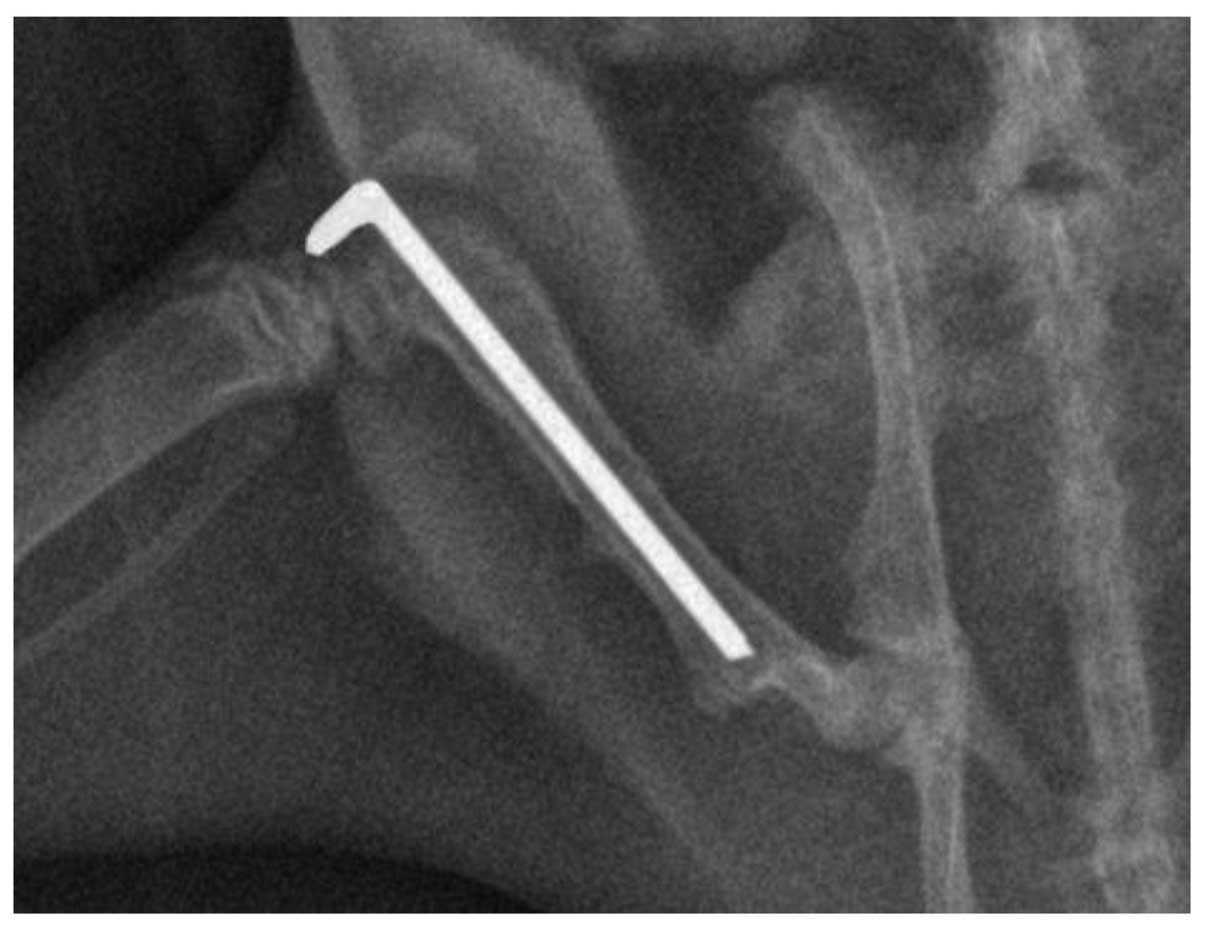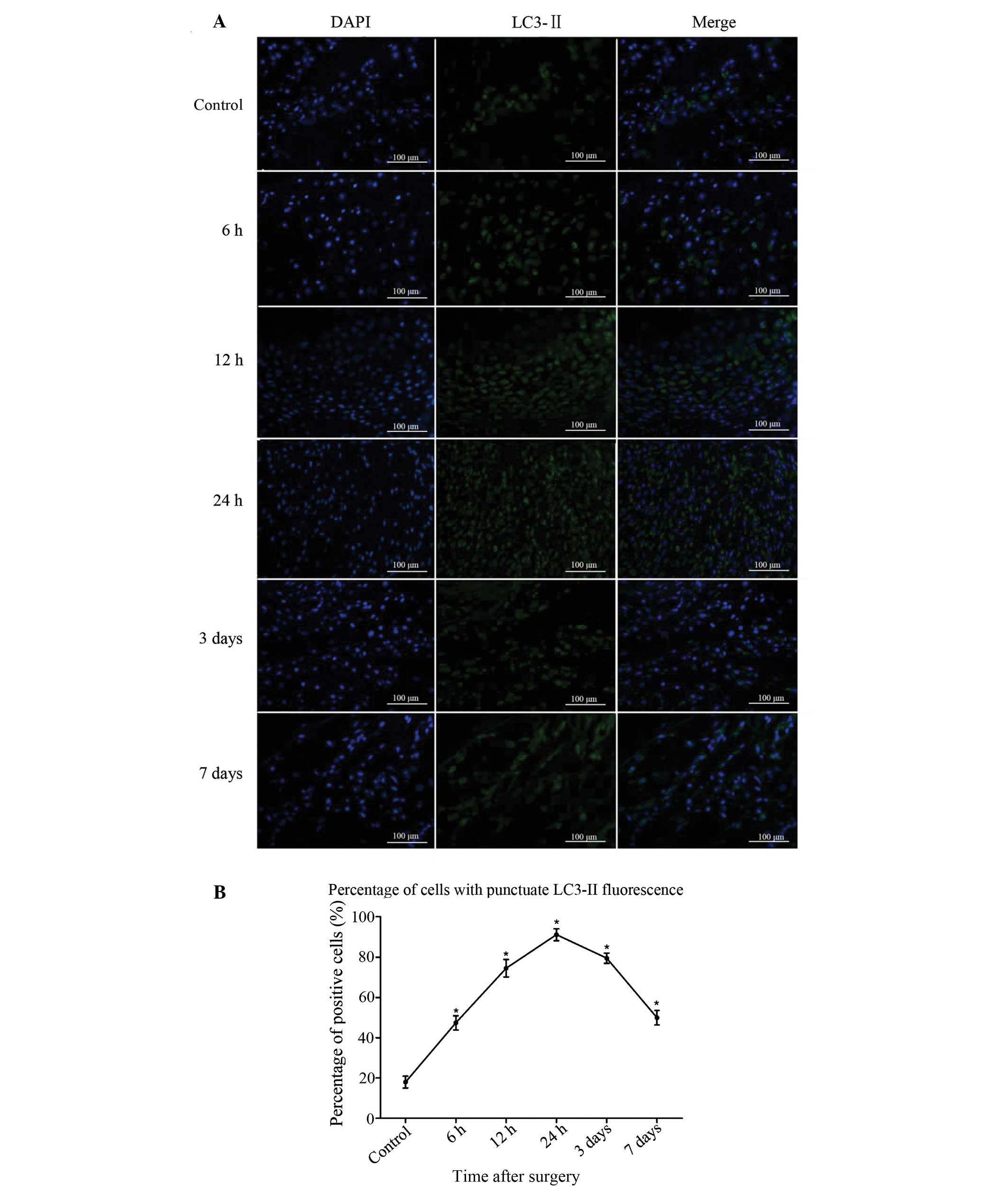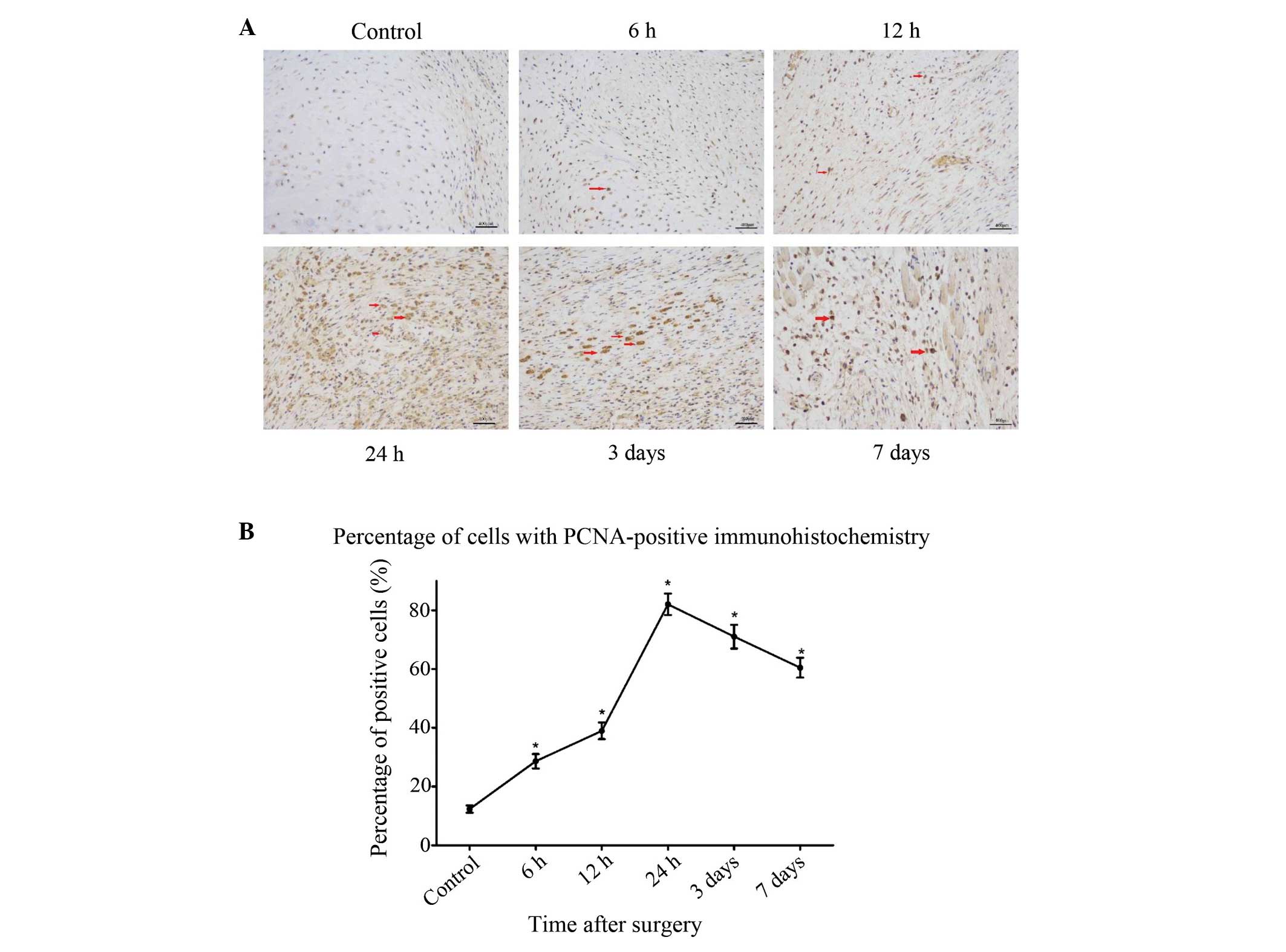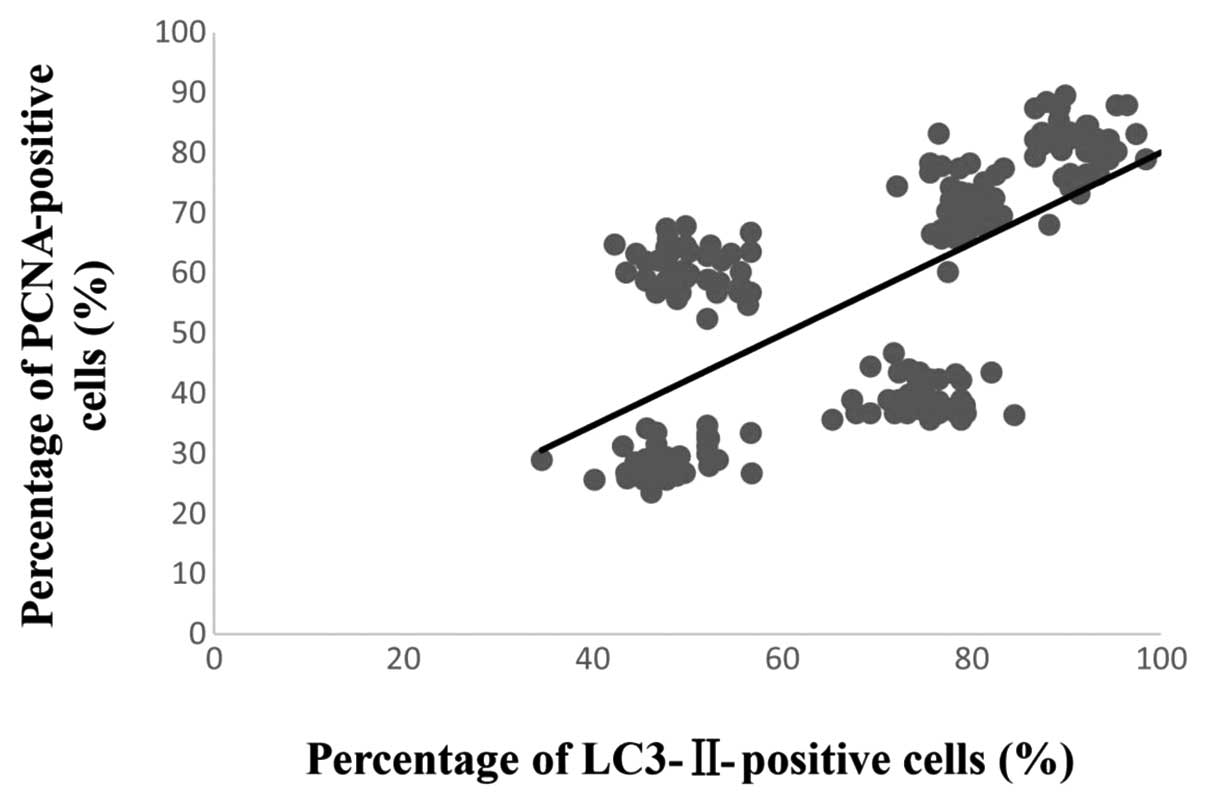|
1
|
Megas P: Classification of non-union.
Injury. 36(Suppl 4): S30–S37. 2005.PubMed/NCBI
|
|
2
|
Rueff-Barroso CR, Milagres D, Valle J,
Casimiro-Lopes G, Nogueira-Neto JF, Zanier JF and Porto LC: Bone
healing in rats submitted to weight-bearing and non-weight-bearing
exercises. Med Sci Monit. 14:BR231–BR236. 2008.PubMed/NCBI
|
|
3
|
Mizushima N, Levine B, Cuervo AM and
Klionsky DJ: Autophagy fights disease through cellular
self-digestion. Nature. 451:1069–1075. 2008. View Article : Google Scholar : PubMed/NCBI
|
|
4
|
Levine B and Kroemer G: Autophagy in the
pathogenesis of disease. Cell. 132:27–42. 2008. View Article : Google Scholar : PubMed/NCBI
|
|
5
|
Lin Y, Tang C, He H and Duan R: Activation
of mTOR ameliorates fragile X premutation rCGG repeat-mediated
neurodegeneration. PloS One. 8:e625722013. View Article : Google Scholar : PubMed/NCBI
|
|
6
|
Su H, Li J, Osinska H, Li F, Robbins J,
Liu J, Wei N and Wang X: The COP9 signalosome is required for
autophagy, proteasome-mediated proteolysis, and cardiomyocyte
survival in adult mice. Circ Heart Fail. 6:1049–1057. 2013.
View Article : Google Scholar : PubMed/NCBI
|
|
7
|
Caramés B, Hasegaa A, Taniguchi N, Miyaki
S, Blanco FJ and Lotz M: Autophagy activation by rapamycin reduces
severity of experimental osteoarthritis. Ann Rheum Dis. 71:575–581.
2012. View Article : Google Scholar : PubMed/NCBI
|
|
8
|
Vellai T: Autophagy genes and ageing. Cell
Death Differ. 16:94–102. 2009. View Article : Google Scholar : PubMed/NCBI
|
|
9
|
Klionsky DJ and Emr SD: Autophagy as a
regulated pathway of cellular degradation. Science. 290:1717–1721.
2000. View Article : Google Scholar : PubMed/NCBI
|
|
10
|
Thorburn A: Apoptosis and autophagy:
Regulatory connections between two supposedly different processes.
Apoptosis. 13:1–9. 2008. View Article : Google Scholar : PubMed/NCBI
|
|
11
|
Bao XH, Naomoto Y, Hao HF, Watanabe N,
Sakurama K, Noma K, Motoki T, Tomono Y, Fukazawa T, Shirakawa Y, et
al: Autophagy: Can it become a potential therapeutic target? Int J
Mol Med. 25:493–503. 2010.PubMed/NCBI
|
|
12
|
Beau I, Mehrpour M and Codogno P:
Autophagosomes and human diseases. Int J Biochem Cell Biol.
43:460–464. 2011. View Article : Google Scholar : PubMed/NCBI
|
|
13
|
Mijaljica D, Prescott M and Devenish RJ:
Autophagy in disease. Methods Mol Biol. 648:79–92. 2010. View Article : Google Scholar : PubMed/NCBI
|
|
14
|
Zhang L, Guo YF, Liu YZ, Liu YJ, Xiong DH,
Liu XG, Wang L, Yang TL, Lei SF, Guo Y, et al: Pathway-based
genome-wide association analysis identified the importance of
regulation-of-autophagy pathway for ultradistal radius BMD. J Bone
Miner Res. 25:1572–1580. 2010. View
Article : Google Scholar : PubMed/NCBI
|
|
15
|
Daroszewska A, van't Hof RJ, Rojas JA,
Layfield R, Landao-Basonga E, Rose L, Rose K and Ralston SH: A
point mutation in the ubiquitin-associated domain of SQSMT1 is
sufficient to cause a Paget's disease-like disorder in mice. Hum
Mol Genet. 20:2734–2744. 2011. View Article : Google Scholar : PubMed/NCBI
|
|
16
|
Kabeya Y, Mizushima N, Ueno T, Yamamoto A,
Kirisako T, Noda T, Kominami E, Ohsumi Y and Yoshimori T: LC3, a
mammalian homologue of yeast Apg8p, is localized in autophagosome
membranes after processing. EMBO J. 19:5720–5728. 2000. View Article : Google Scholar : PubMed/NCBI
|
|
17
|
Su JC, Tseng PH, Hsu CY, Tai WT, Huang JW,
Ko CH, Lin MW, Liu CY, Chen KF and Shiau CW: RFX1-dependent
activation of SHP-1 induces autophagy by a novel obatoclax
derivative in hepatocellular carcinoma cells. Oncotarget.
5:4909–4919. 2014. View Article : Google Scholar : PubMed/NCBI
|
|
18
|
Manolagas SC: Birth and death of bone
cells: Basic regulatory mechanisms and implications for the
pathogenesis and treatment of osteoporosis. Endocr Rev. 21:115–137.
2000. View Article : Google Scholar : PubMed/NCBI
|
|
19
|
Lee FY, Choi YN, Beherns FF, Defoun DO and
Einhorn TA: Programmed removal of chondrocytes during endochondral
fracture healing. J Orthop Res. 16:144–150. 1998. View Article : Google Scholar : PubMed/NCBI
|
|
20
|
Einhorn TA: The cell and molecular biology
of fracture dealing. Clin Orthop Relat Res. (355 Suppl): S7–S21.
1998. View Article : Google Scholar : PubMed/NCBI
|
|
21
|
Holstein JH, Menger MD, Culemann U, Meier
C and Pohlemann T: Development of a locking femur nail for mice. J
Biomech. 40:215–219. 2007. View Article : Google Scholar : PubMed/NCBI
|
|
22
|
Müller E, Koch P, Nazarian S and Schatzker
J: The Comprehensive Classification of Fractures of Long Bones
(1st). New York, NY: Springer. 1994.
|
|
23
|
Hou H, Zhang L, Zhang L, Liu D, Xiong Q,
Du H and Tang P: Acute spinal cord injury could cause activation of
autophagy in dorsal root ganglia. Spinal Cord. 51:679–682. 2013.
View Article : Google Scholar : PubMed/NCBI
|
|
24
|
Moscat J and Diaz-Meco MT: p62 at the
crossroads of autophagy, apoptosis and cancer. Cell. 137:1001–1004.
2009. View Article : Google Scholar : PubMed/NCBI
|
|
25
|
Dosenko VE, Nagibin VS, Tumanovska LV and
Moibenko AA: Protective effect of autophagy in anoxia-reoxygenation
of isolated cardiomyocyte? Autophagy. 2:305–306. 2006. View Article : Google Scholar : PubMed/NCBI
|
|
26
|
Mortimore GE and Schworer CM: Induction of
autophagy by amino-acid deprivation in perfused rat liver. Nature.
270:174–176. 1977. View
Article : Google Scholar : PubMed/NCBI
|
|
27
|
Quan W, Jung HS and Lee MS: Role of
autophagy in the progression from obesity to diabetes and in the
control of energy balance. Arch Pharm Res. 36:223–229. 2013.
View Article : Google Scholar : PubMed/NCBI
|
|
28
|
Barnouti ZP, Owtad P, Shen G, Petocz P and
Darendeliler MA: The biological mechanisms of PCNA and BMP in TMJ
adaptive remodeling. Angle Orthod. 81:91–99. 2011. View Article : Google Scholar : PubMed/NCBI
|
|
29
|
Iwaki A, Jingushi S, Oda Y, Izumi T, Shida
JI, Tsuneyoshi M and Sugioka Y: Localization and quantification of
proliferating cells during rat fracture repair: Detection of
proliferating cell nuclear antigen by immunohistochemistry. J Bone
Miner Res. 12:96–102. 1997. View Article : Google Scholar : PubMed/NCBI
|
|
30
|
Morrow PW, Tung HY and Hemmings HC Jr:
Rapamycin causes activation of protein phosphatase-2A1 and nuclear
translocation of PCNA in CD4+ T cells. Biochem Biophys Res Commun.
323:645–651. 2004. View Article : Google Scholar : PubMed/NCBI
|
|
31
|
Kobayashi S, Kishimoto T, Kamata S, Otsuka
M, Miyazaki M and Ishikura H: Rapamycin, a specific inhibitor of
the mammalian target of rapamycin, suppresses lymphangiogenesis and
lymphatic metastasis. Cancer Sci. 98:726–733. 2007. View Article : Google Scholar : PubMed/NCBI
|
|
32
|
Kawahara T, Asthana S and Kneteman NM:
m-TOR inhibitors: What role in liver transplantation? J Hepatol.
55:1441–1451. 2011. View Article : Google Scholar : PubMed/NCBI
|


















